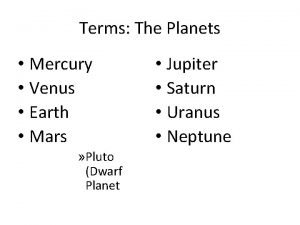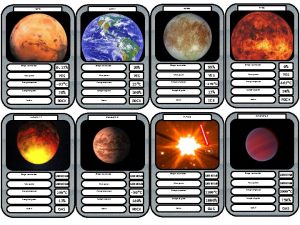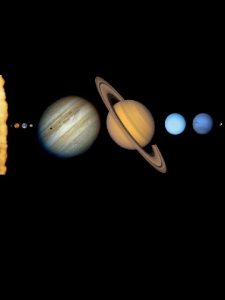MARS VENUS EUROPA EARTH Oxygen concentration 0 13


- Slides: 2

MARS VENUS EUROPA EARTH Oxygen concentration 0. 13% Oxygen concentration 20% Oxygen concentration 99% Oxygen concentration 0% Water present YES Average temperature -63°C Average temperature 15°C Average temperature -170°C Average temperature 462°C Strength of gravity 38% Strength of gravity 100% Strength of gravity 13% Strength of gravity 90% Surface ROCK Surface ICE Surface ROCK GLIESE-581 G KEPLER-11 f AB PICTORIS B HN PEG B Oxygen concentration UNKNOWN Water present UNKNOWN Average temperature 1100°C Average temperature 2000°C 140% Strength of gravity 1000% Strength of gravity 750% ROCK Surface GAS Oxygen concentration UNKNOWN Water present Average temperature -50°C 13% Strength of gravity GAS Surface Oxygen concentration UNKNOWN Water present Average temperature 250°C Strength of gravity Surface

VENUS EUROPA EARTH MARS Venus is similar to Earth in many ways. It is a rocky planet of similar size, and it is made up of many of the same elements. But it’s also different in many more ways. The atmosphere is mostly carbon dioxide, with some sulphur dioxide, and is so heavy it would crush any person on the surface. Because of the high concentration of carbon dioxide, the planet is very hot. The small amount of water is not in liquid form. Europa is one of the moons of Jupiter. Its surface is covered with ice that is kilometres thick. Astronomers think that under the ice is liquid water, kept warm by the forces of gravity from Jupiter. Europa’s atmosphere is made almost entirely of oxygen, but is about 100, 000, 000 times thinner than Earth’s atmosphere! Europa’s landscape is almost totally flat, with few features above one hundred metres high, which suggests a very young, active surface. Earth is abundant with life, made possible by the high oxygen content and presence of liquid water. Earth lies in what’s known as the “Goldilocks” zone around stars – not too hot, not too cold, but just right. When astronomers look for life on other planets, they look for the same conditions that are found on Earth. Astronomers are now discovering new planets regularly, and some of them look like they may have some of those conditions. Mars is the subject of many science-fiction stories that talk about the possibility of life there. NASA announced that they had found fossils of microbes that existed on Mars millions of years ago, but then retracted their findings some years later. Mars has channels in its surface that look like they were made by liquid water, but the only water on the surface now is locked in the permanent frost on the surface, along with frozen carbon dioxide in the ice caps. HN PEG B GLIESE-581 G KEPLER-11 F HN Peg 2 is one of the few exoplanets (planets outside the solar system) observed directly by telescope, orbiting the star HN Pegasi 50 light years from our Sun. It’s a huge planet about 5000 times more massive than Earth, about 17 times more massive than Jupiter. Its star is very similar to our Sun, although a little younger, and HN Peg 2 orbits very close to it. HN Peg 2 may be a type of failed star called a brown dwarf, but very little else is known about it. Gliese-581 g was discovered in September 2010, and is one of seven planets that orbit its parent star, a small red dwarf only 20. 5 light years from Earth. That’s only four times as far as our closest star! We haven’t observed this planet for long enough to know too much about it, but it lies in the middle of the “Goldilocks” zone for its parent star. Its surface is probably rocky, and it’s about 3 x bigger than Earth. If it has an atmosphere, liquid water might be found there. Kepler-11 F orbits the star Kepler-11, a Sun-like star in the constellation Cygnus. It’s one of six planets orbiting the star, at a distance about ¼ as far as the Earth is from the Sun. It’s about 18 times the volume of the Earth, but only 2. 3 times the mass. This makes its density close to Saturn’s, so low it would float on water if there was an ocean big enough! It’s made of gas, but it might have a rocky core at its centre. AB PICTORIS B AB Pictoris B is one of the few exoplanets (planets outside the solar system) observed directly by telescope. Most of these planets are very large, and AB Pictoris B is more than 13 times more massive than Jupiter, making it around 4000 times more massive than Earth! Its star is a little cooler than our sun, but Pictoris B is closer to its star than Earth is to our sun, and is very hot. Its gravity is very strong, because of its mass, and it’s probably made almost entirely of gas.



